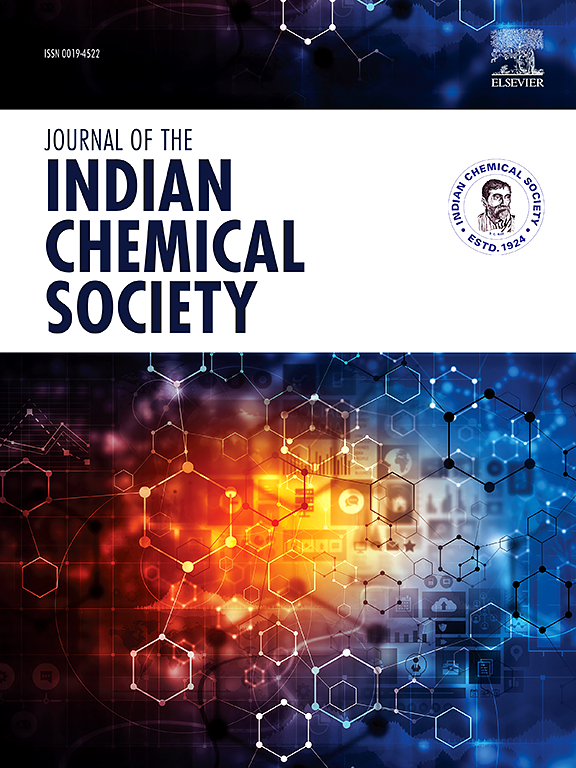优化储氢性能:MXene (MX)-VCl3在镁/氢化镁可持续能源中的辅助动力学
IF 3.2
4区 化学
Q2 CHEMISTRY, MULTIDISCIPLINARY
引用次数: 0
摘要
氢在Mg/MgH2材料中的储存是储能应用的关键研究方向。氢的储存是开发一个可行的解决能源枯竭的最关键的问题之一。氢化镁的特点是其动力学平衡,重量轻,成本效益高,导致氢密度增加。MgH2的总储氢量为7.6%,但只有在某些情况下才能实现全容量释放/储存。含v的化合物是很有吸引力的催化剂,因为它们由于空的d轨道而吸引电子。二维材料:MXene (MX)具有较大的表面积,允许与许多化学基团进行简单的功能化,使其成为储能的选择。在这项工作中,用球磨法制备了Mg-5wt% (MX + VCl3)的混合物,并进行了储氢试验。在320℃时,Mg-5wt% (MX + VCl3)的储氢量为2.32 wt%。热重图显示,200℃为起始温度,326℃为热分解温度,397℃为终点。Mg-5wt% (MX + VCl3)失重表现出由添加剂驱动的中间反应和复杂的热行为。采用XRD、FESEM、EDS、XPS和TEM对样品的结构、形貌、化学氧化态和结晶度进行了表征。脱氢反应的活化能为126.53 kJ/mol。本文章由计算机程序翻译,如有差异,请以英文原文为准。

Optimizing hydrogen storage properties: MXene (MX)-VCl3 assisted kinetics in Magnesium/Magnesium hydride for sustainable energy
Hydrogen storage in Mg/MgH2 materials is a key study for the energy storage applications. Hydrogen storage is one of the most critical issues in developing a viable solution to the depletion of energy resources. Magnesium hydride is characterized by its kinetic equilibrium, lightweight, and cost-effectiveness, which leads to increased hydrogen densities. MgH2 has an overall hydrogen storage of 7.6 wt%, yet only in certain circumstances is full-capacity release/storage possible. V-containing compounds are fascinating catalysts owing to their attraction for electrons due to empty d orbitals. 2D material: MXene (MX) has a large surface area, allowing for simple functionalization with numerous chemical groups, making them a choice for energy storage. In this work, a mixture of Mg-5wt% (MX + VCl3) was produced by ball milling and tested for hydrogen storage. The hydrogen storage of Mg-5wt% (MX + VCl3) is 2.32 wt% at 320 °C. The thermogravimetric plot shows that 200 °C is the onset temperature, 326 °C is the thermal decomposition temperature, and 397 °C is the endpoint. The weight loss for Mg-5wt% (MX + VCl3) shows intermediate reactions and complex thermal behavior that are driven by the additives. XRD, FESEM with EDS, XPS and TEM are used to characterize the structural, morphology, chemical oxidation state and crystallinity of the samples. The activation energy for the dehydriding reaction is 126.53 kJ/mol.
求助全文
通过发布文献求助,成功后即可免费获取论文全文。
去求助
来源期刊
CiteScore
3.50
自引率
7.70%
发文量
492
审稿时长
3-8 weeks
期刊介绍:
The Journal of the Indian Chemical Society publishes original, fundamental, theorical, experimental research work of highest quality in all areas of chemistry, biochemistry, medicinal chemistry, electrochemistry, agrochemistry, chemical engineering and technology, food chemistry, environmental chemistry, etc.

 求助内容:
求助内容: 应助结果提醒方式:
应助结果提醒方式:


